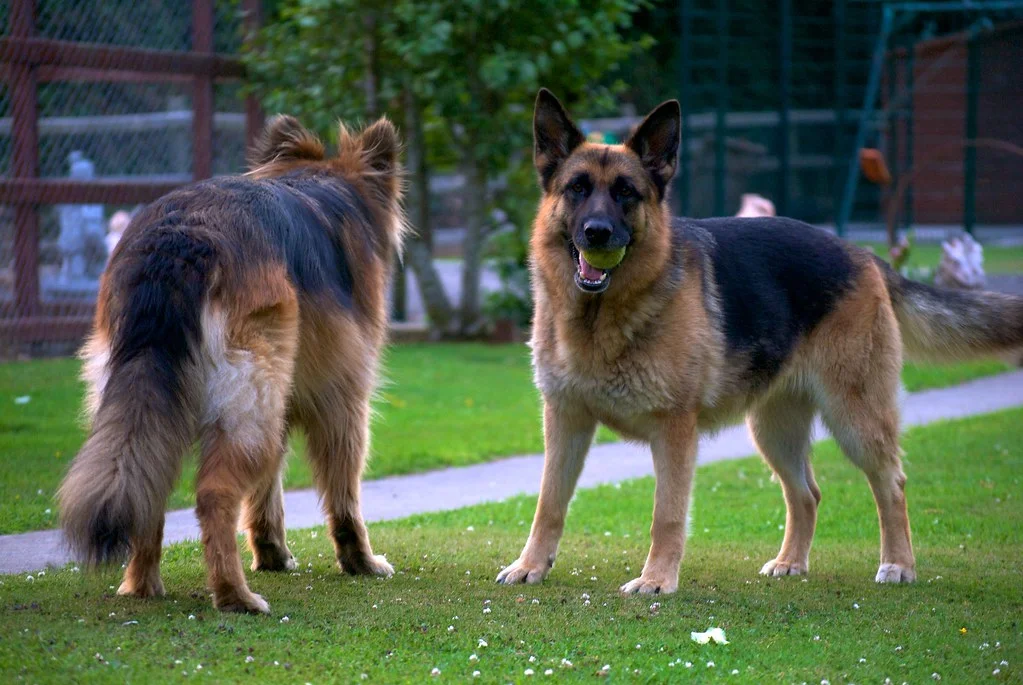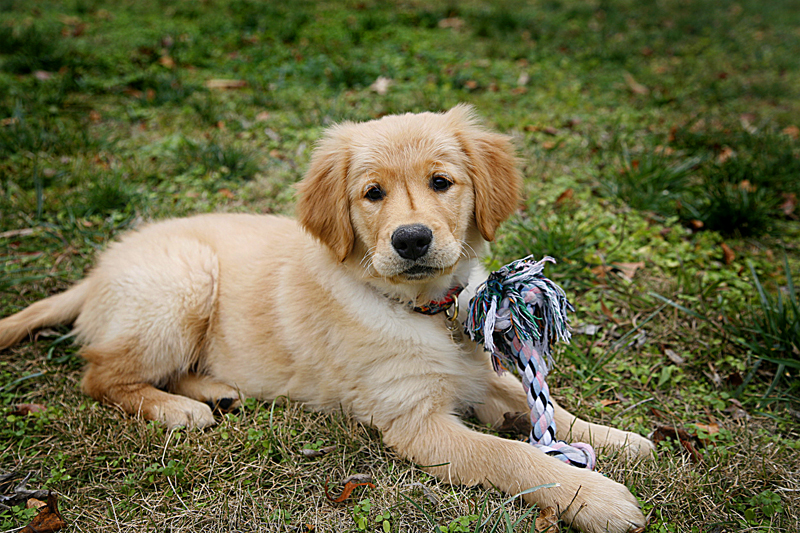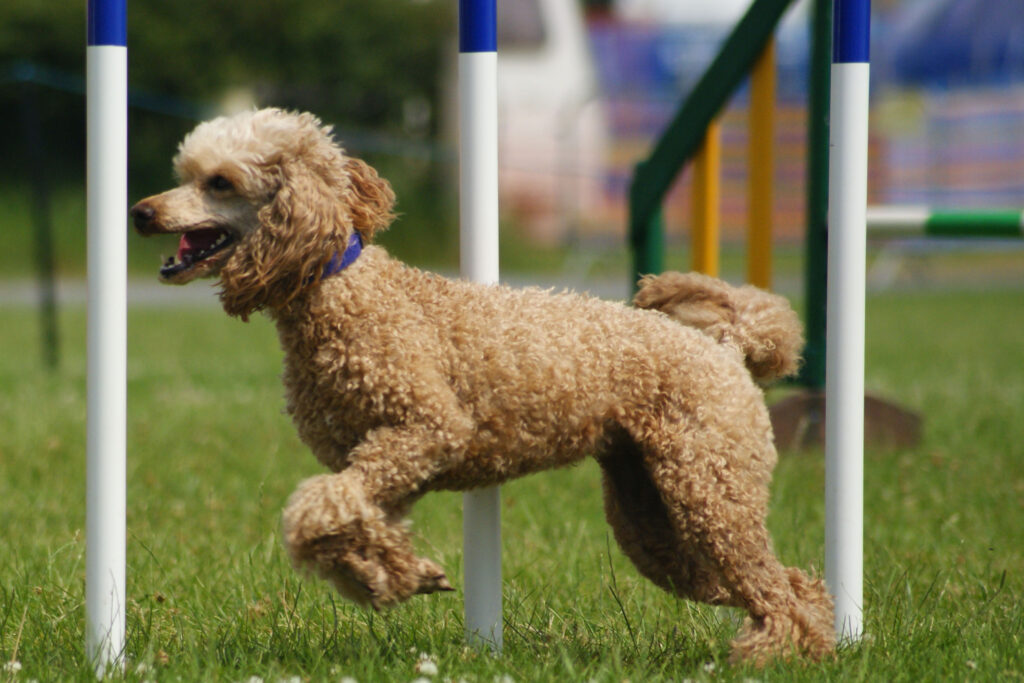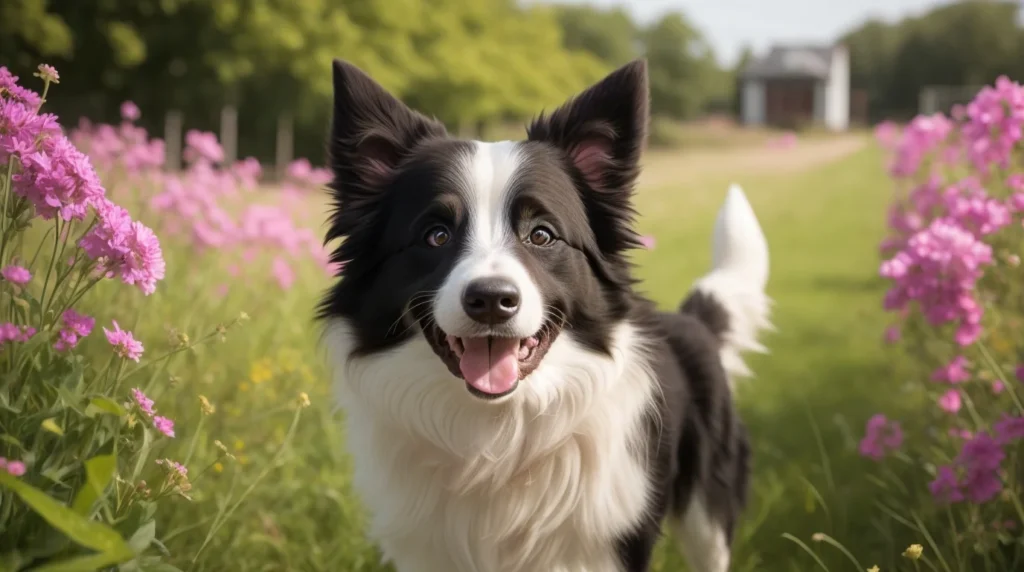Dog training is a rewarding journey that begins with selecting the right breed. How your furry friend acts, how smart they are, and how much energy they have matter a lot for training. This article talks about 7 popular dog breeds for training that are good at being friendly and learning. Picking the right breed for training is a big choice. It can change how your dog acts and how much you enjoy being a pet owner. The key is to find a breed that aligns with your lifestyle, energy levels, and training goals.
Labrador Retriever: The Obedient Companion

The Labrador Retriever is an excellent choice for a dog friend that’s easy to train.
1. Intelligent and Easy to Train:
Labrador Retrievers boast remarkable intelligence, making them quick learners. Labs are easy to train because they are smart, which helps owners communicate with them.
2. Known for Their Friendly Nature:
Renowned for their friendly and outgoing demeanor, Labrador Retrievers make excellent family dogs. They are friendly with adults and children, making any home warm and inviting.
3. Ideal for Families and First-Time Dog Owners:
Labradors’ gentle temperament and eagerness to please make them an ideal family choice. Their ability to adapt makes them great for first-time pet owners.
German Shepherd: The Versatile Worker

They are known for being smart and versatile. They are exceptional in many different roles.
1. Known for Their Intelligence and Versatility:
German Shepherds consistently rank high in intelligence, showcasing adaptability in various tasks. Dogs are not just companions; they can also do jobs like being police dogs or therapy dogs.
2. Commonly Used in Police and Military Work:
The police and military often use German Shepherds because they are smart, hardworking, and loyal. These dogs have an instinct to protect and are good at following commands. That’s why they’re super important in these important jobs.
3. Require Consistent Training and Mental Stimulation:
Consistent training is paramount to unleash the full potential of a German Shepherd. These dogs thrive on mental stimulation. They enjoy complex tasks and stay mentally active, which gives them a sense of purpose.
Golden Retriever: The Gentle Learner

The y are excellent for those seeking a gentle and intelligent companion.
1. Friendly, Intelligent, and Adaptable:
Golden Retrievers are renowned for their friendly disposition, intelligence, and adaptability. Their approachable nature makes them a favorite among families and individuals alike.
2. Eager to Please, Making Them Great for Training:
Golden Retrievers have a strong desire to make their owners happy. These dogs love learning new things, which makes training even better.
3. Suitable for Families and Individuals Alike:
The versatility of Golden Retrievers makes them suitable for various living situations. They fit well into different lifestyles, whether in a busy family or as a companion for one person.
Poodle: The Clever and Trainable

They are clever and trainable dogs, adding intelligence and charm to owning a dog.
1. Highly Intelligent and Easy to Train:
Poodles are generally considered to be among the smartest canine breeds. They can be easily trained because they are smart and can follow commands.
2. Comes in Three Sizes (Standard, Miniature, and Toy):
Poodles offer the added benefit of versatility in size. You can pick a Poodle that fits your home and what you like: a regular, small, or toy one. Enjoy their unique characteristics.
3. Known for Their Hypoallergenic Coat:
Beyond their intellectual prowess, Poodles are famous for their hypoallergenic coat. Individuals and families with allergies will find this clever breed appealing. It’s an excellent choice for them.
Border Collie: The Energetic and Popular Dog Breeds for Training

They are a great breed if you have an active lifestyle. They are intelligent and full of enthusiasm.
1. Highly Energetic and Intelligent:
Border Collies are synonymous with energy. They are lively and intelligent, making them a good match for active owners.
2. Requires Mental and Physical Stimulation:
Mental and physical stimulation is crucial to keep a Border Collie content. To maintain a strong relationship, engage in thought-provoking and active activities together.
3. Best Suited for Active Owners and Those Involved in Dog Sports:
Border Collies are a good fit for active people and dog sports due to their energy. They do well in agility contests and obedience training because they are agile and quick thinkers.
Shetland Sheepdog: The Agile Herder

Their agility and herding instincts make them unique among popular dog breeds for training.
1. Known for Their Agility and Herding Instincts:
True to their name, Shetland Sheepdogs excel in agility. Their herding instincts, honed over generations, add a unique dimension to their capabilities.
2. Require Mental Challenges to Stay Engaged:
Incorporating activities challenging their intelligence is essential to mentally stimulating a Shetland Sheepdog. Their herding background makes them responsive to tasks that involve problem-solving.
3. Suitable for Families with an Active Lifestyle:
Shetland Sheepdogs are a good match for active families because they are agile and smart. To keep your dog happy, do activities that use their herding instincts.
Doberman Pinscher: The Loyal Guardian

They are known for being smart and loyal. They make great companions and protectors.
1. Intelligent and Loyal:
Doberman Pinschers combine intelligence with unwavering loyalty. Dogs can form strong bonds with their owners, which makes them even more devoted.
2. Often Used as Guard Dogs:
Dobermans are often used as guard dogs because they are loyal, fearless, and protective. Their imposing presence is a deterrent, effectively safeguarding homes and properties.
3. Requires Early Socialization and Consistent Training:
Early socialization is crucial for Doberman Pinschers to exhibit their best qualities. Training them regularly when they’re young shapes them into well-behaved and obedient friends.
This mix of different breeds gives people looking for a dog a range of choices, each with unique traits. Different dog breeds provide options for people who want a smart, affectionate companion or a faithful guardian.
Training Tips for Different Dog Breeds
Regardless of the breed, specific training tips apply. Positive reinforcement, consistency, and patience are critical components of successful training. Tailor your training to match your dog’s personality and keep training sessions positive.
Common Training Challenges
Dog training is a rewarding journey, but it has challenges. Understanding and overcoming these common hurdles will pave the way for a successful training experience:
1. Stubborn Behavior:
- Challenge: Some dogs exhibit stubbornness, making it challenging to get them to follow commands.
- Solution: Patience is key. Use positive reinforcement and make training sessions enjoyable to encourage cooperation.
2. Distractions Galore:
- Challenge: Dogs can easily get distracted, especially in outdoor environments or around other animals.
- Solution: Start training in a controlled environment. Gradually increase distractions as your dog becomes more responsive.
3. Inconsistent Training:
- Challenge: Inconsistent training can confuse dogs, leading to a lack of clarity in expectations.
- Solution: Stick to a regular training schedule and ensure everyone involved uses the same commands and techniques.
4. Overcoming Fear or Anxiety:
- Challenge: Fearful or anxious dogs may struggle to focus during training sessions.
- Solution: Create a positive association with training by using treats and praise. Gradually expose them to the training environment to build confidence.
5. Excessive Barking:
- Challenge: Excessive barking can be a challenging behavior to curb during training.
- Solution: Identify the cause of the barking and address it accordingly. Give orders such as “quiet” and give praise for stillness.
6. Pulling on the Leash:
- Challenge: Dogs pulling on the leash can make walks frustrating for both the owner and the dog.
- Solution: Train loose-leash walking by stopping when there’s tension and rewarding your dog for walking calmly beside you.
7. Jumping Up:
- Challenge: Dogs may jump up on people, which can be undesirable behavior.
- Solution: Teach an alternative behavior, such as sitting, and reward this instead. Consistency is crucial in breaking the jumping habit.
8. Not Coming When Called:
- Challenge: A dog ignoring the recall command poses safety concerns.
- Solution: Make coming to you a positive experience. Use high-value treats, praise, and play to reinforce a strong recall response.
Advanced Training Techniques
Taking your dog’s training to the next level involves going beyond basic commands and engaging in more advanced techniques. Here are some methods to challenge and stimulate your canine companion:
1. Agility Training:
- Overview: Set up an agility course with obstacles like jumps, tunnels, and weave poles. This enhances physical fitness and sharpens your dog’s mental acuity.
- Benefits: Improves coordination, builds confidence, and strengthens the bond between you and your dog.
2. Advanced Obedience Commands:
- Overview: Teach commands beyond the basics, such as “stay,” “leave it,” or “heel.” Focus on reliability and precision in executing these commands.
- Benefits: Enhances communication, reinforces obedience, and provides mental stimulation.
3. Trick Training:
- Overview: Teach entertaining tricks like rolling over, playing dead, or fetching specific items. This adds an element of fun and showcases your dog’s intelligence.
- Benefits: Mental stimulation, bonding, and a great way to impress friends and family.
4. Canine Freestyle (Doggie Dancing):
- Overview: Choreograph a dance routine with your dog, incorporating moves, spins, and jumps to music. This creative form of training enhances communication and coordination.
- Benefits: Strengthens the bond, provides mental stimulation, and showcases your dog’s agility.
5. Scent Detection Training:
- Overview: Introduce scent-based activities where your dog has to locate specific scents or objects. This taps into their natural olfactory abilities.
- Benefits: Mental stimulation, enhances focus, and engages your dog’s sense of smell.
6. Off-Leash Training:
- Overview: Train your dog to obey commands without a leash in a controlled environment. This requires a high level of trust and reliability in their response.
- Benefits: Builds a strong bond, allows for more freedom during activities, and demonstrates advanced obedience.
7. Fetch with Specific Items:
- Overview: Teach your dog to fetch specific items by name. This advanced fetch form involves identifying and retrieving items based on verbal cues.
- Benefits: Mental stimulation, reinforces object recognition, and adds complexity to a classic game.
8. Intelligence Toys and Puzzles:
- Overview: Provide toys and puzzles that challenge your dog’s problem-solving skills. This includes treat-dispensing toys and puzzles that require manipulation.
- Benefits: Mental stimulation, prevents boredom, and encourages independent thinking.
9. Distance Commands:
- Overview: Train your dog to follow commands from a distance. This includes sitting, staying, or coming on command even when you’re not nearby.
- Benefits: Strengthens obedience, enhances communication, and allows for control in various situations.
Training for Behavioral Challenges
Addressing behavioral challenges in dogs requires a strategic and patient approach. Here are effective training techniques for common behavioral issues:
1. Aggression Towards People or Other Dogs:
- Assessment: Identify triggers for aggression, such as fear or territorial instincts.
- Training Approach: Gradual desensitization and counter-conditioning. Reward calm behavior and seek professional help for severe cases.
2. Separation Anxiety:
- Assessment: Recognize signs of anxiety when left alone, like destructive behavior or excessive barking.
- Training Approach: Gradual departures, leaving for short intervals and gradually increasing. Create positive associations with alone time using treats and toys.
3. Excessive Barking:
- Assessment: Understand the reason behind barking, whether it’s due to boredom, fear, or territorial instincts.
- Training Approach: Teach the “quiet” command, reward silence, and address the root cause. Provide mental stimulation and regular exercise.
4. Jumping Up on People:
- Assessment: Determine if jumping is a display of excitement or seeking attention.
- Training Approach: Teach an alternative behavior like sitting. Ignore jumping and reward sitting. Consistent reinforcement is essential.
5. Pulling on the Leash:
- Assessment: Identify whether pulling is due to excitement or a desire to lead.
- Training Approach: Teach loose-leash walking using positive reinforcement. Stop and reward when there’s no tension on the leash.
6. Chewing on Furniture or Items:
- Assessment: Recognize if chewing is due to teething, boredom, or anxiety.
- Training Approach: Provide appropriate chew toys, discourage chewing on forbidden items, and address underlying causes.
7. Fear or Anxiety:
- Assessment: Identify specific triggers causing fear or anxiety.
- Training Approach: Gradual exposure to triggers, counter-conditioning, and positive reinforcement. Create positive associations with feared stimuli.
8. Digging Habits:
- Assessment: Understand if digging is due to instinct, boredom, or seeking cool spots.
- Training Approach: Provide a designated digging area, discourage digging in unwanted areas, and reward appropriate behavior.
9. Nipping or Mouthing:
- Assessment: Recognize if nipping is playful or due to overexcitement.
- Training Approach: Teach bite inhibition through redirecting to toys, withdrawing attention, and rewarding gentle play.
Conclusion: Best 7 Popular Dog Breeds for Training
To sum up, you must consider different things when training your dog. This includes picking a suitable breed and recognizing the value of a supportive setting. It also involves providing consistent training. You can train your pet to be obedient and happy with the correct approach, patience, and a real bond.
FAQs About Best 7 Popular Dog Breeds for Training
Q. How much time does it take to train a dog properly?
A. The duration varies based on the breed, age, and individual personality. Consistent training over several weeks to months is typical.
Q. Can any dog be trained, regardless of age?
A. Dogs can learn new behaviors at any age with patience and positive reinforcement, even without early training.
Q. Are professional trainers necessary for dog training?
A. Professional trainers can offer helpful guidance, especially for difficult training goals.
Q. What if my dog is not responding to training?
A. To improve your training, be patient and get help from a professional trainer for specific challenges.
Q. Can a dog be trained without being given treats?
A. While treats can be effective, praise, toys, and positive reinforcement in various forms can also be successful.




